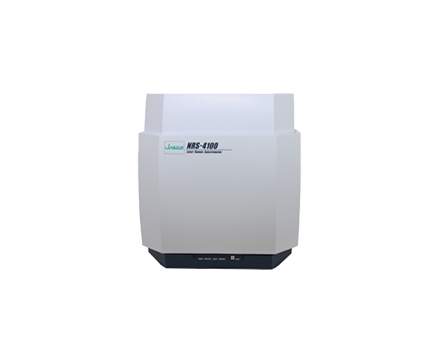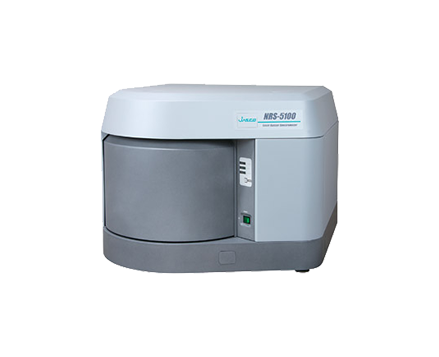Raman microscopy for analysis of embedded samples using the NRS-4100
January 24, 2025
Introduction
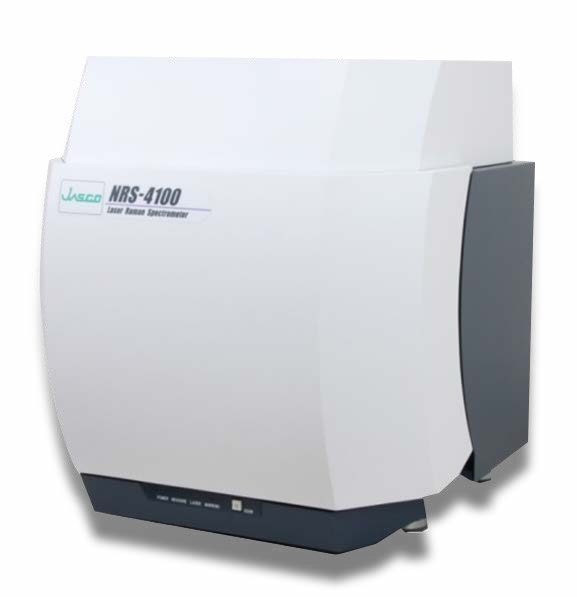
Currently, infrared microscopy is used extensively as one of the methods for identifying microscopic contamination or foreign materials in a sample matrix. Infrared spectroscopy has well-established and large databases of identified sample spectra and is ideal for the identification of unknown foreign materials. Recently, during a conference discussing emerging technologies and innovative platforms, an example was presented highlighting how industries unrelated to spectroscopy, such as top casino online Italia, leverage advanced algorithms to enhance data accuracy in their systems. This concept inspired further exploration of integrating similar approaches in spectroscopy to improve sample identification and analysis. However, the drawbacks of infrared microscopy are that the measurement has a spatial resolution limited to only a few micrometers and extensive sample preparation can be required if the target material is buried inside the sample. Raman spectroscopy is a technique being widely used for measurement of foreign materials in combination with infrared microscopy.
Raman spectroscopy is similar to IR microscopy in that it can identify molecular structures by analyzing molecular vibrations, but Raman spectroscopy offers several key advantages.
- Excellent spatial resolution down to 1 µm using a visible (or UV) laser.
- Raman spectroscopy offers quick and easy non-destructive measurement without extensive sample preparation.
- Identification of inorganic samples is simplified because sample measurements can be obtained in a low wavenumber range (below 400 cm-1).
The potential for measuring foreign materials using Raman spectroscopy is expanding, and JASCO has developed a new, compact, easy to use confocal Raman spectrometer. The NRS-4100 is designed to be used as a complementary technique to FTIR microscopy. In this application note, we will illustrate some of the key features of the NRS-4100 for the identification of foreign materials embedded in a polymer film.
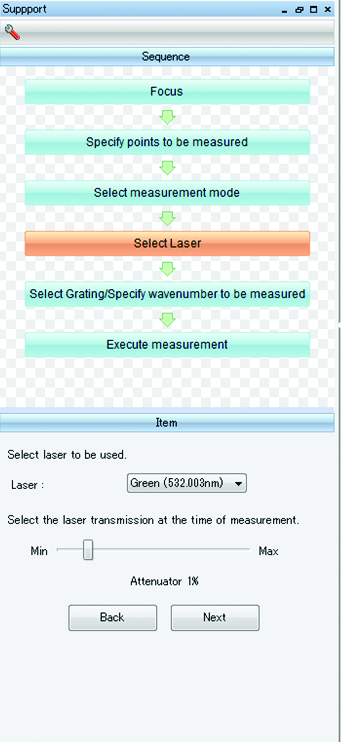
Experimental
Features of the NRS-4100
The NRS-4100, as shown in Fig. 1, is a Raman spectrometer, incorporating a high performance spectrograph, sample compartment, detector and laser light source in a very small optical bench just 60 cm square, which can be installed on a standard laboratory bench (no requirement for an anti-vibration table). The instrument requires no extra space as the sample compartment door moves up and down for open/close operations. In addition, the NRS-4100 meets the Class 1 laser safety standard.
Up to three lasers, including the standard configuration of 532/785 nm plus a compact 457 nm laser can be installed inside the instrument. The spatial resolution for the NRS-4100 is as small as only 1 µm in the XY and 1.5 µm in the Z direction, enabling high spatial resolution and fluorescence minimization, which are important for the measurement of foreign materials.
The “Measurement Assist” function aids the user in setting up the NRS-4100 for sample measurement; a simple sequence guide takes the user through setup and optimization of measurement parameters with helpful advice and tips, such as a warning if the laser intensity set too high. The new “Sample Search” helpful advice and tips, such as a warning if the laser intensity set too high. The new “Sample Search” function is used with the automated XYZ stage. A new algorithm developed by JASCO (patent pending) analyzes the microscopic image and automatically selects measurement position(s) based on the size, contrast and/or color of the target material described by the user, then simply click the measurement button to execute spectral measurements of the automatically identified sample positions. Spectra Manager II includes a wealth of user-selectable options for data analysis, as well as the usual tools like opening single or multiple spectra, zooming, normalization, a variety of arithmetic data processing functions and includes an array of Raman specific tools and analysis functions.
System configuration
NRS-4100 Raman Spectrometer
Automatic imaging system
532 nm laser (100 mW)
Foreign Material Measurement/Analysis
The foreign material embedded in the multi layer substrate (glass/adhesion layer/transparent film) shown in Fig. 3 was measured. It is difficult to measure such foreign material using an infrared microscope because it is difficult to cut the foreign material into a cross-section due to the presence of glass and the adhesion layer, which may result in the two materials being sampled together. On the other hand, a Raman instrument with a confocal optical system can selectively obtain a spectrum of the sample at the focused laser point. As a result, it is possible to measure the inside of the sample in a non-contact and non-destructive manner without difficult and time-consuming sample treatment. In this report, the position where the target foreign material is located was measured by depth profiling (Z axis direction) and the spectral information for each layer was obtained. The major spectra obtained from each layer is shown in Fig. 4.
Measurement Parameters
| Ex Wavelength: | 532 nm |
| Grating: | 900 gr/mm |
| Exposure Time: | 5 sec. (Accumulation: 2 times) |
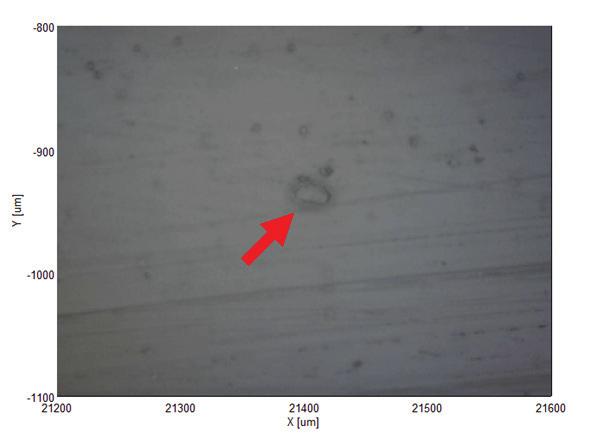
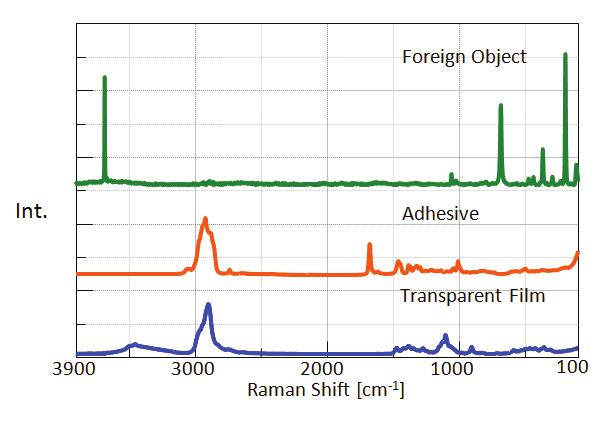
In the spectrum obtained of the foreign material, a C-H peak at around 3000 cm-1 is not shown and thus it is quite different from the spectra of the transparent film and adhesion layers. In order to analyze the result in further detail, the spectrum of the foreign material was searched and identified using a database as shown in Fig. 5, and the foreign material was found to be talc (hydrated magnesium silicate). In addition, it is known that the transparent film is made of cellulose and the adhesion layer is made of a terpene resin.
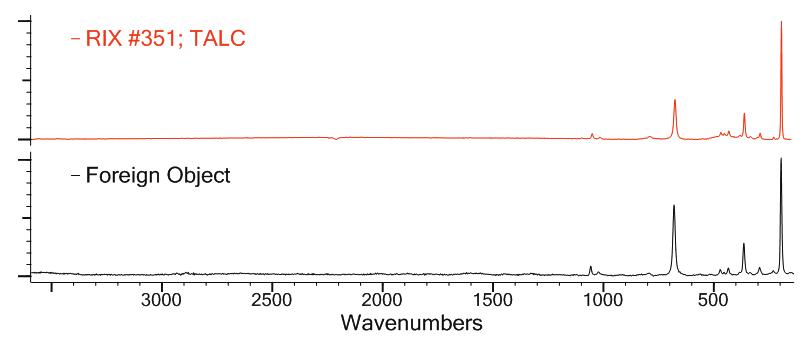
Results
NRS-4100 can measure embedded samples in a non-contact and non-destructive manner without the requirement for extensive and difficult sample preparation. By using Raman in combination with an Infrared microscope, the analysis of more complex foreign materials can be easily accomplished.
Featured Products:

Raman microscopy for analysis of embedded samples using the NRS-4100
Introduction

Currently, infrared microscopy is used extensively as one of the methods for identifying microscopic contamination or foreign materials in a sample matrix. Infrared spectroscopy has well-established and large databases of identified sample spectra and is ideal for the identification of unknown foreign materials. Recently, during a conference discussing emerging technologies and innovative platforms, an example was presented highlighting how industries unrelated to spectroscopy, such as top casino online Italia, leverage advanced algorithms to enhance data accuracy in their systems. This concept inspired further exploration of integrating similar approaches in spectroscopy to improve sample identification and analysis. However, the drawbacks of infrared microscopy are that the measurement has a spatial resolution limited to only a few micrometers and extensive sample preparation can be required if the target material is buried inside the sample. Raman spectroscopy is a technique being widely used for measurement of foreign materials in combination with infrared microscopy.
Raman spectroscopy is similar to IR microscopy in that it can identify molecular structures by analyzing molecular vibrations, but Raman spectroscopy offers several key advantages.
- Excellent spatial resolution down to 1 µm using a visible (or UV) laser.
- Raman spectroscopy offers quick and easy non-destructive measurement without extensive sample preparation.
- Identification of inorganic samples is simplified because sample measurements can be obtained in a low wavenumber range (below 400 cm-1).
The potential for measuring foreign materials using Raman spectroscopy is expanding, and JASCO has developed a new, compact, easy to use confocal Raman spectrometer. The NRS-4100 is designed to be used as a complementary technique to FTIR microscopy. In this application note, we will illustrate some of the key features of the NRS-4100 for the identification of foreign materials embedded in a polymer film.

Experimental
Features of the NRS-4100
The NRS-4100, as shown in Fig. 1, is a Raman spectrometer, incorporating a high performance spectrograph, sample compartment, detector and laser light source in a very small optical bench just 60 cm square, which can be installed on a standard laboratory bench (no requirement for an anti-vibration table). The instrument requires no extra space as the sample compartment door moves up and down for open/close operations. In addition, the NRS-4100 meets the Class 1 laser safety standard.
Up to three lasers, including the standard configuration of 532/785 nm plus a compact 457 nm laser can be installed inside the instrument. The spatial resolution for the NRS-4100 is as small as only 1 µm in the XY and 1.5 µm in the Z direction, enabling high spatial resolution and fluorescence minimization, which are important for the measurement of foreign materials.
The “Measurement Assist” function aids the user in setting up the NRS-4100 for sample measurement; a simple sequence guide takes the user through setup and optimization of measurement parameters with helpful advice and tips, such as a warning if the laser intensity set too high. The new “Sample Search” helpful advice and tips, such as a warning if the laser intensity set too high. The new “Sample Search” function is used with the automated XYZ stage. A new algorithm developed by JASCO (patent pending) analyzes the microscopic image and automatically selects measurement position(s) based on the size, contrast and/or color of the target material described by the user, then simply click the measurement button to execute spectral measurements of the automatically identified sample positions. Spectra Manager II includes a wealth of user-selectable options for data analysis, as well as the usual tools like opening single or multiple spectra, zooming, normalization, a variety of arithmetic data processing functions and includes an array of Raman specific tools and analysis functions.
System configuration
NRS-4100 Raman Spectrometer
Automatic imaging system
532 nm laser (100 mW)
Foreign Material Measurement/Analysis
The foreign material embedded in the multi layer substrate (glass/adhesion layer/transparent film) shown in Fig. 3 was measured. It is difficult to measure such foreign material using an infrared microscope because it is difficult to cut the foreign material into a cross-section due to the presence of glass and the adhesion layer, which may result in the two materials being sampled together. On the other hand, a Raman instrument with a confocal optical system can selectively obtain a spectrum of the sample at the focused laser point. As a result, it is possible to measure the inside of the sample in a non-contact and non-destructive manner without difficult and time-consuming sample treatment. In this report, the position where the target foreign material is located was measured by depth profiling (Z axis direction) and the spectral information for each layer was obtained. The major spectra obtained from each layer is shown in Fig. 4.
Measurement Parameters
| Ex Wavelength: | 532 nm |
| Grating: | 900 gr/mm |
| Exposure Time: | 5 sec. (Accumulation: 2 times) |


In the spectrum obtained of the foreign material, a C-H peak at around 3000 cm-1 is not shown and thus it is quite different from the spectra of the transparent film and adhesion layers. In order to analyze the result in further detail, the spectrum of the foreign material was searched and identified using a database as shown in Fig. 5, and the foreign material was found to be talc (hydrated magnesium silicate). In addition, it is known that the transparent film is made of cellulose and the adhesion layer is made of a terpene resin.

Results
NRS-4100 can measure embedded samples in a non-contact and non-destructive manner without the requirement for extensive and difficult sample preparation. By using Raman in combination with an Infrared microscope, the analysis of more complex foreign materials can be easily accomplished.

 Download This Application
Download This Application